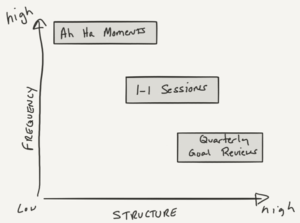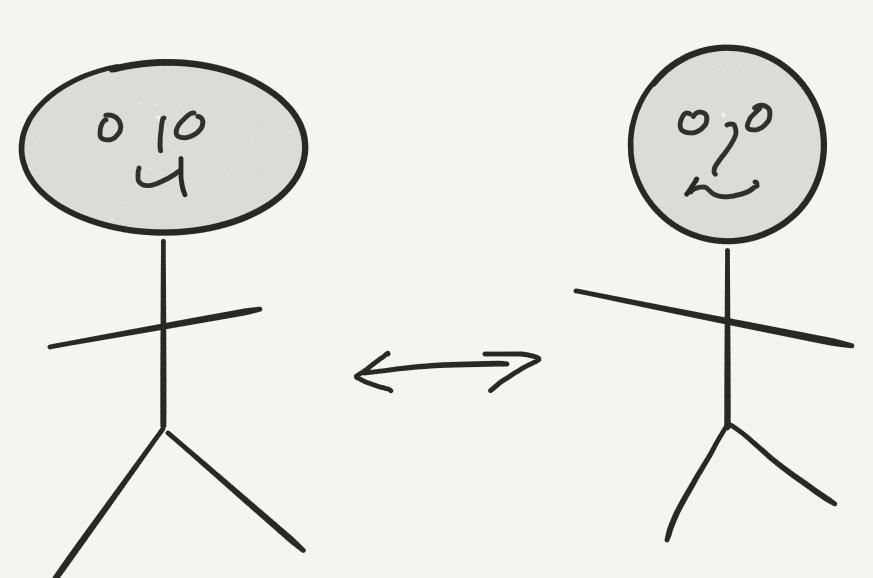In our last post, we made the case that the annual review is going away. It’s a dreaded beast of a process that creates havoc in organizations, and even the “big guys” like General Electric, Microsoft, Adobe and others are rethinking (or have rethought) their performance management process.
We made the case that there were three key ingredients for a successful rollout of a more agile process:
- Managers need to be coaches.
2. The culture has to value coachability.
3. A new agile process must be supported by a measurement system.
Managers As Coaches
If there’s one leadership skillset that differentiates good from great organizations, it’s the ability for your managers to be coaches. That’s precisely what today’s post is about. But to get there, managers have to recognize some of the common and costly challenges that often slow them down or stop them from coaching others.
Challenge #1: Problem solving is a problem. Managers are often great problem solvers, but the problem with problem solvers is that they don’t address issues until a problem rises to a certain level and grabs their attention. Coaching is less about problem solving and more about ongoing dialogue that helps people be successful before problems arise. So when leaders don’t address issues until they become problems, they miss out on great coaching opportunities.
Challenge #2: Urgency outweighs the importance. Managers often get tied up in the day to day and forget about the long-term development needs of their people. As a result, 1-on-1s often get skipped because something else more urgent came up or 1-on-1s turn into transactional project management check-ins instead of development discussions for people.
Challenge #3: Limiting beliefs about coaching drive the wrong behaviors. I recently worked with an executive leader who faced a challenging situation with a peer. They disagreed about an important issue, emotions rose in the middle of a meeting and things got heated. The leader was put off by the conversation and was still simmering about the situation days later. When I asked the leader if she had discussed the issue with her peer, she looked at me with a blank stare and said, “No.” When leaders have limiting or negative beliefs about what coaching is, those beliefs drive the wrong behaviors, like avoidance or aggression, and make it difficult to engage in coaching conversations.
Three Ingredients to Help Your Managers Be Better Coaches
For managers to be great coaches, they need the right mindset, skillset and framework.
Mindset. Most coaching programs focus on skills, giving people tools and processes for having a coaching conversation, for example. That’s important, but not sufficient. Our perspective is that for behavior to change for anything, whether it’s being a better coach or improving your golf swing, a person has to address the limiting assumptions and beliefs that are driving their current behavior. For a leader to be a great coach, they have to make a shift from seeing coaching and feedback as punitive and critical to it being helpful and supportive. Without this change in mindset, coaching will look less like coaching and more like directing and rescuing. The conversation will be one-way (from the leader to the team member) and coaching will be something that happens the team member instead of with the team member.
Skillset. There are many skills required to be a great coach, such as listening, acknowledging, questioning, creating awareness and strategizing. Beyond these, coaches also have to develop both assessment and conversational skills. Combining all of these skills enables the coach to be assertive, point out behaviors and impact and engage a team member in a two-way dialogue to build commitment and follow-up to encourage change.
Framework: To enable both the mindset and skillset, there has to be an overarching guide that anchors the coaching process and helps the leader understand when and where they should be providing coaching. A simple framework that we use in our leadership development programs is thinking in terms of building blocks. In other words, coaching conversations build on each other with a different element of structure and frequency.

- Aha Moments: These are coachable moments that can occur at any point in the day where coaching conversations may last only seconds or minutes. They often happen in hallways between meetings or in other informal settings.
- 1-on-1 Sessions: Managers should have regular 1-on-1s with their people on a consistent basis. These are relatively informal, but are scheduled and structured. The best 1-on-1s balance both “the what” and “the how” so that the coaching conversation includes both the results that a team member is producing and developmental aspects to help the team member thrive.
- Quarterly Goal Reviews: These structured and formal coaching sessions focus on linking the team members work to the bigger picture in the organization and helping the team member understand how they are performing against a standard set of goals and objectives. Quarterly goal reviews are also a great opportunity to add encouragement and look forward to the upcoming business quarter.
Having a clear framework provides the structure so that there are never any surprises and team members have the information and coaching to be successful.
The Bottom Line
The bottom line is that if you want to move away from the traditional stack-ranked annual performance review process and more toward ongoing dialogue, your managers are key to that success.
Managers have to see themselves as coaches.
They need the skills to be great coaches.
And they need a framework to guide them.
We’d love to hear your perspective. How is your organization moving toward more agile performance discussions?

